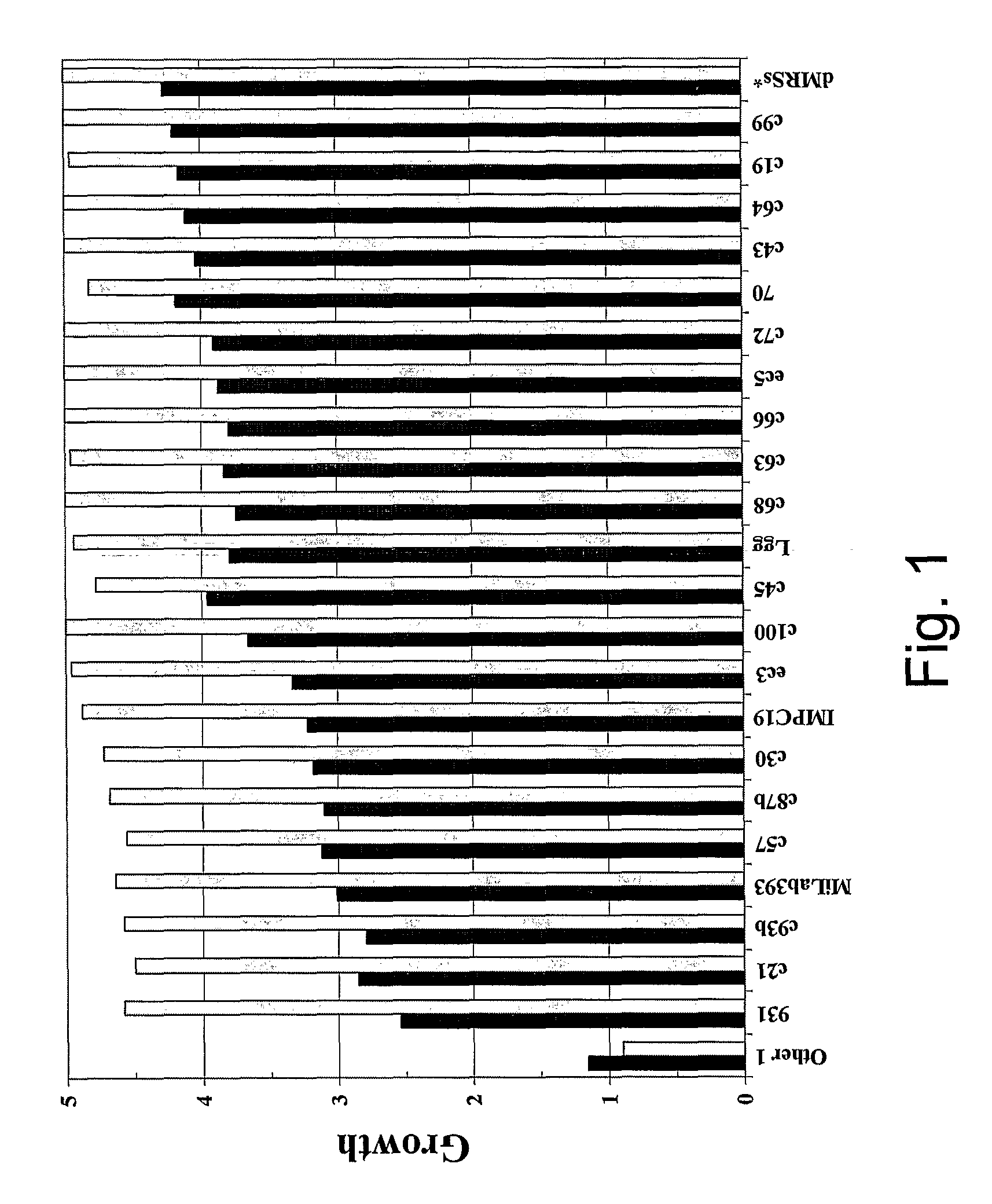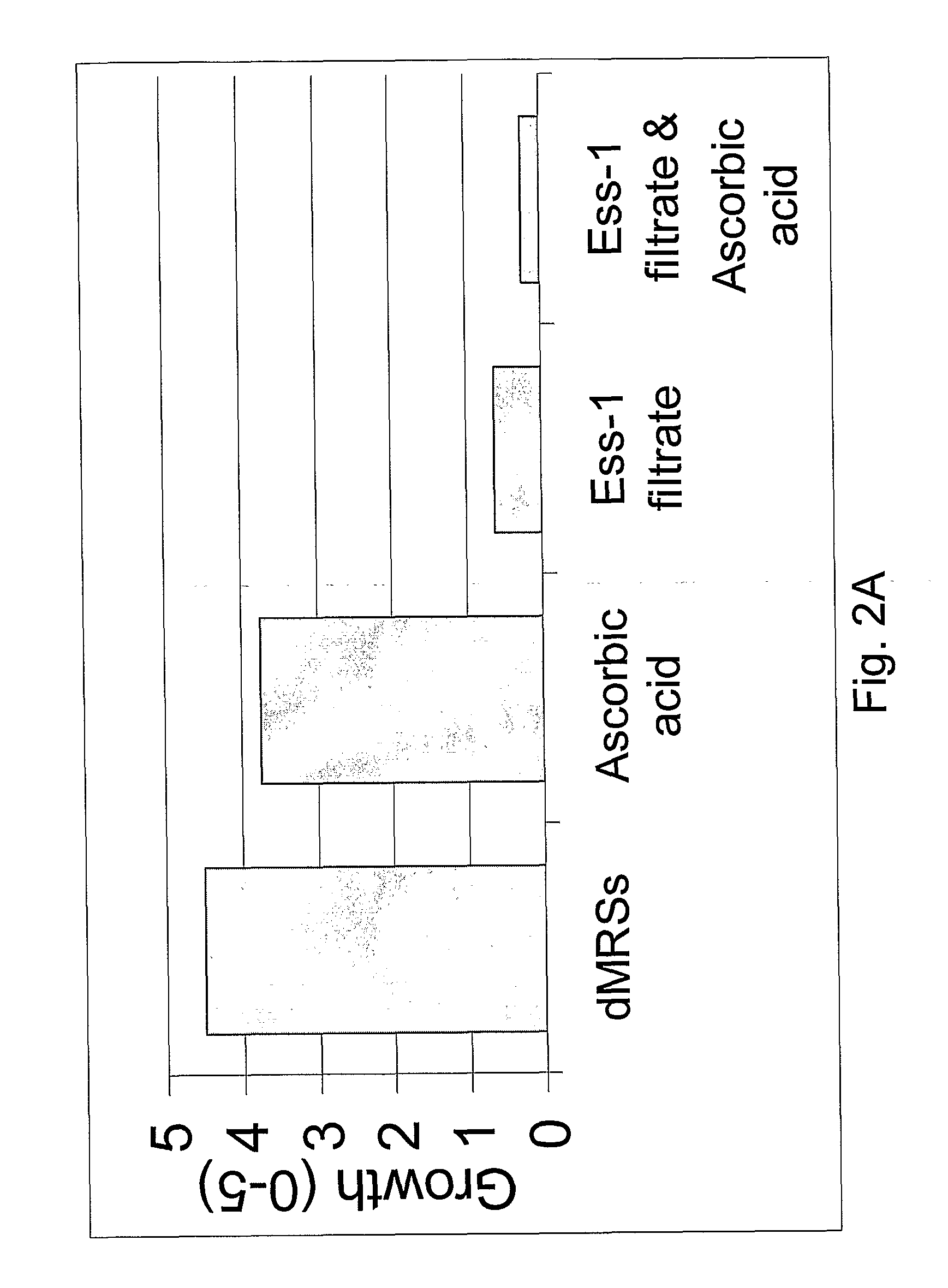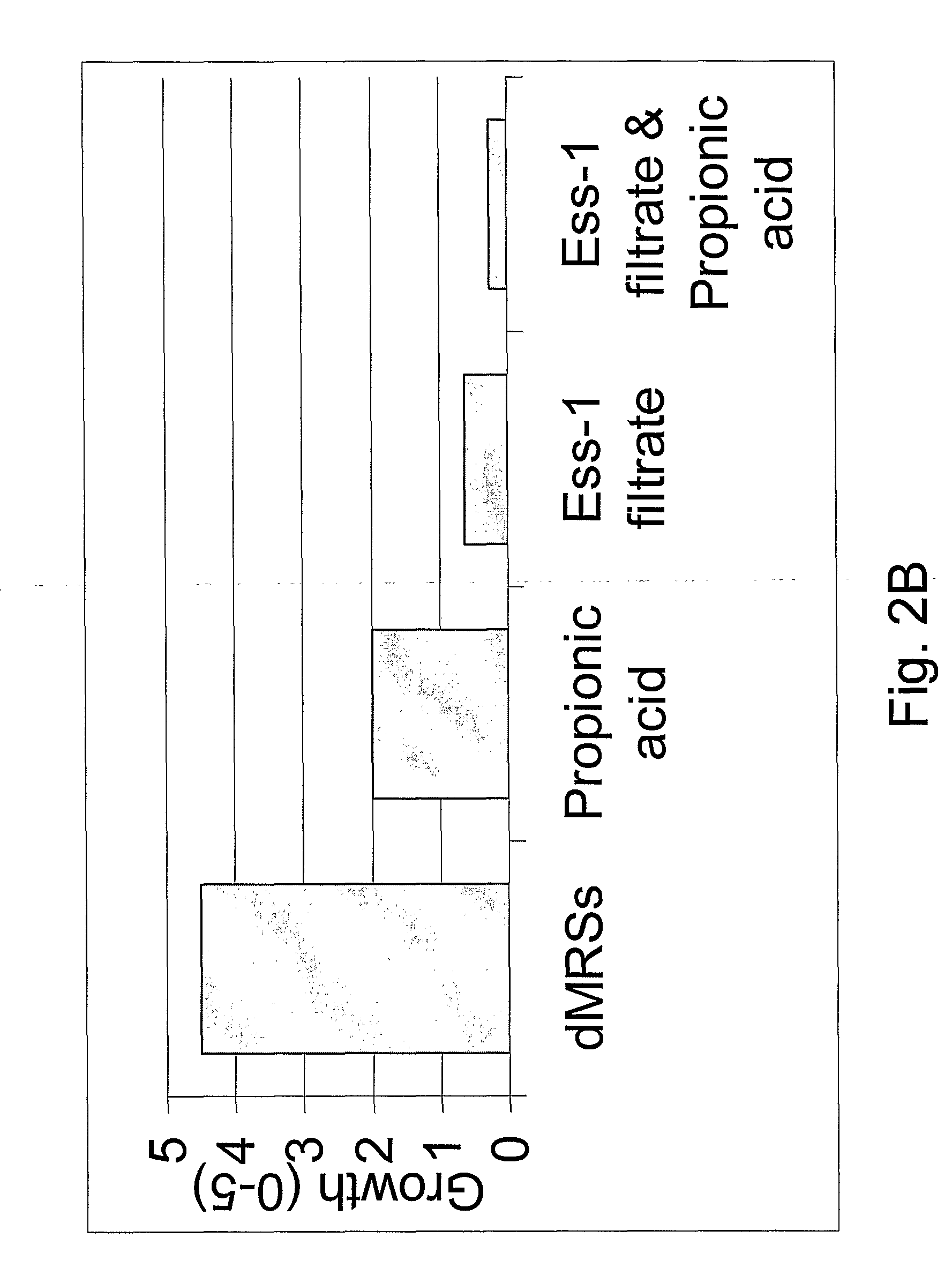Agent
- Summary
- Abstract
- Description
- Claims
- Application Information
AI Technical Summary
Benefits of technology
Problems solved by technology
Method used
Image
Examples
example 1
Isolation and Typing of Ess-1
Aim
[0067]The initial purpose of this study is to isolate and type a Lactobacillus strain that inhibit the growth of Candida albicans and Candida glabrata to a large extent compared to other Lactobacillus strains.
Method
Yeast Strains
[0068]Clinical isolates of Candida albicans and Candida glabrata were used as test strains. These were isolated from the vagina of women with vaginal candidiasis and from healthy females.
Screening I.
[0069]About 140 Lactobacillus strains, originating from human skin, throat, teeth, baby faeces, vegetables and seeds were cultured in MRS broth and stamped onto MRS agar plates. The agar plates were incubated under anaerobic conditions at 37° C. Additionally, SAB (Sabouraud) agar (LAB M, Bury, UK) was poured onto the MRS agar and was allowed to congeal. C. albicans culture was seeded onto the agar and the plates were incubated aerobically at 37° C. A visual evaluation of the inhibition was done. Strains inhibiting C. albicans equall...
example 2
Heat Treatment
Aim
[0078]The aim of this experiment is to study the heat resistance for the Candida growth inhibiting substances produced by strain Ess-1.
Method
[0079]LCF was heat treated for 20 minutes at 90° C. C. albicans and C. glabrata were added to a final concentration of approximately 5×104 CFU ml−1. The plates were incubated for 20 hours at 37° C. and the candida growth in the vials was visually evaluated and graduated from five to zero. Här nämns plates och vials I samma mening.
Results
[0080]The heat treated filtrate of strain Ess-1 was as successful in inhibiting growth of yeast as the non-treated filtrate used as a comparison. Therefore, heat treatment of the filtrate did not destroy the active substance of this bacterium.
example 3
Inhibition of C. albicans with LCF with Addition of Salts and Acids
Aim
[0081]The purpose of this study is to determine whether salts and acids affects growth of Candida and if an improved growth inhibition can be achieved when they are added to the LCF of strain Ess-1.
Method—Salts
[0082]Aliquots of LCF were pH adjusted to the pKa-value for each salt and air dried until they were completely dry and thereafter resuspended in 0.3% sodium acetate and sodium propionate. C. albicans was added to a final concentration of approximately 5×104 CFU ml−1. The fractions were incubated for 20 hours at 37° C. The inhibition was evaluated by visual observation of turbidity and graduated by two persons using a template on a scale from five to zero. The wells containing strong growth of Candida sp. in pure dMRSs-broth were graduated as five, while wells with no visual growth were graduated as zero.
Methods—Acids
[0083]Succinic acid, acetic acid, propionic acid and ascorbic acid were added to a final conc...
PUM
 Login to View More
Login to View More Abstract
Description
Claims
Application Information
 Login to View More
Login to View More - R&D
- Intellectual Property
- Life Sciences
- Materials
- Tech Scout
- Unparalleled Data Quality
- Higher Quality Content
- 60% Fewer Hallucinations
Browse by: Latest US Patents, China's latest patents, Technical Efficacy Thesaurus, Application Domain, Technology Topic, Popular Technical Reports.
© 2025 PatSnap. All rights reserved.Legal|Privacy policy|Modern Slavery Act Transparency Statement|Sitemap|About US| Contact US: help@patsnap.com



